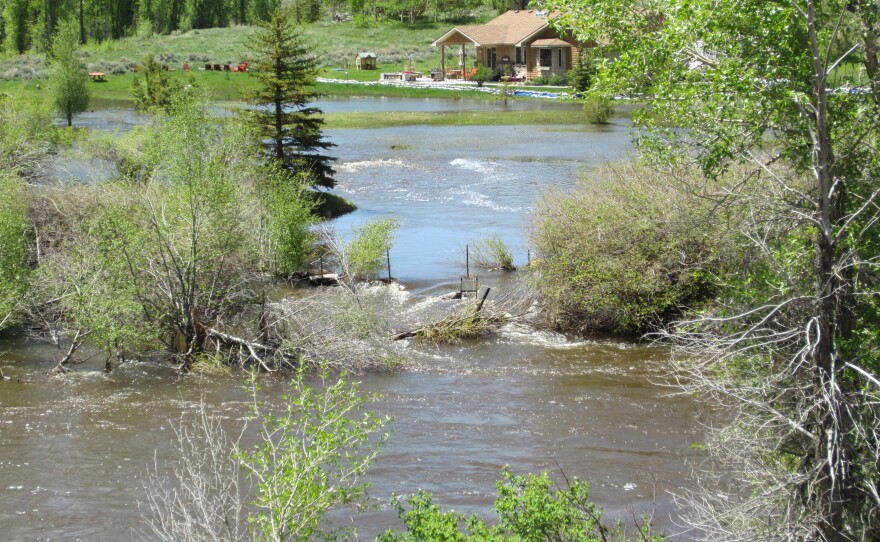This spring, rivers were overflowing banks all over the state. Some rivers saw record—or near-record—flood stages. The Laramie River hit its second highest flood level on record, and that’s only four years after its highest on record in 2010. But floods aren’t all sandbagging and property damage: they also mean plenty of water for the long dry summer ahead.
Governor Matt Mead is developing a new Water Strategy in hopes of keeping all this water from leaving the state too fast. But a new report by the National Climate Assessment says earlier, heavier run-offs will make capturing all that surplus much trickier.
Chip Rawlins is giving a tour of the floods in his neighborhood outside Wood’s Landing on the Little Laramie River. “Another six inches it would have been over the road right here,” he says. “And it was over the road on the other side of the bridge, you’ll see. For a while the people had a john boat parked over there. And they were poling the boat back and forth to get to their cars.”
Rawlins is a geographer. He just finished a study of ancient flood history on the North Platte. He’s also an avid rafter, and considers himself a river detective of sorts.
“The thing that has been pretty well documented is that the run-off is coming earlier,” he says. “The flood peaks are getting earlier and earlier in the Rocky Mountains and Great Basin.”
A report by the National Climate Assessment says to expect more spring flooding, but also much drier summers, meaning the need for storing water could soon be a critical issue.
Mark Schafer is the author of the National Climate Assessment for the Great Plains. He says the state will need more reservoirs to deal with the earlier than usual run-off. “If you don’t have the capacity to store that—if reservoirs already get filled—a lot more may have to run downstream and then it’s not there when it would normally come a little bit later.”
And that could leave ranchers and farmers with less water to irrigate their fields.
Coleman Smith is the area manager for the Bureau of Reclamation. He says this year several of the state’s dams had to release water to control the flow of the rivers. He says the state relies heavily on dams and reservoirs to manage flood damage in years like this one. “Back in the early part of this country’s development and certainly out in the West, ranchers and farmers saw all this water rushing down the river during the spring and summer and realized if they could build some dams and reservoirs that they could grab that water and hold onto it for the times when they really needed it.”
That’s the situation Wyoming finds itself in this year. The last two years of low water have depleted many of the state’s water stores. “Seminoe is at 70-percent full,” Smith says. “And Pathfinder is at 49-percent full. And so between those two big reservoirs, we still have a lot of capacity. And actually we plan to be able to handle the water on the North Platte that’s coming down.”
Governor Matt Mead is developing a new Water Strategyto deal with storage and other water issues. His office has collected lots of public input to find out what Wyomingites want most when it comes to water. Policy advisor Nephi Cole says keeping water from washing away is central on people’s minds. “There’s a lot of interest in water development,” Cole says. “Protection of water rights and water storage, beneficially using the water we have access to and protecting those water rights was by far the largest single area of comment.”
A majority of people’s comments focused on water development projects like dams and reservoirs, large and small. Cole says some of the best water storage sites may be on the Wind River Indian Reservation and talks are in the works between the governor and the tribes. But other sites have been proposed on the Upper Green River at Warren Bridge and at Green River Lakes.
But such projects will present major regulatory hurdles. River detective Chip Rawlins doesn’t like the idea of more dams. “You know, the whole dam thing…I don’t know, we’ve probably carried that as far as we can.”
The next step for the state’s Water Strategy Plan is to narrow down the number of ideas to the best five or ten. The governor’s office will continue to take public input on water use in the state through August 4.










